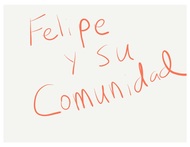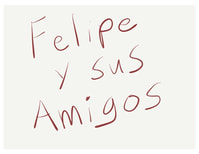Easy Starters or Exit Slips (Or distance learning resources)
Infographics are some of the best authentic resources to use in the Spanish classroom. I use them all the time as bellringers, exit slips, and go to's when I have too little lesson for my 50 minute class. They are easy to use for students because the graphics give so much context to the language. You can use the same infographic for all levels just by changing the questions. It's a great way to get students engaged in the language, but it also helps them develop higher order thinking skills such as analysis, synthesis and evaluation.
|
This is an infographic that describes personalities on TikTok. This includes one with advanced questions and one with novice questions.
|
| ||||||
|
This is an infographic about Katherine Johnson that describes her contributions to NASA and the moon landings. This includes one with advanced questions and one with novice questions.
|
| ||||||
|
This infographic gives advice on healthy morning routines. This includes novice questions.
|
| ||||||
|
This infographic has information about what NOT to do during the coronavirus quarantine. Novice and Advanced versions available.
|
| ||||||||||||
|
This infographic is based on information from NASA. It defines weather, climate, global warming and climate change. Novice and Advanced versions are available.
|
| ||||||||||||
|
If the world had a population of 100 people. This infographic breaks down the percentage of people globally who suffer various disadvantages.
|
| ||||||||||||
|
This infographic explains how Pepe Frog went from cartoon meme to a symbol of hate.
|
| ||||||||||||
Picture Talks
Here are a few picture talks I've created to use with your students. You're welcome to download them and use them with your students.
|
This is the story of a boy who has a lot of activities planned for the day. So he needs a good breakfast so that he will have lots of energy for his activities. On the last page is the story in Spanish and it can also be used as an embedded reading.
| |||||||
|
La Frustrada Carolina is a story about a girl who is frustrated because her little brother is a real brat. It's written in the imperfect tense. I've included wordless version so you can tell the story and then have an embedded reading with the other story. And if you teach a language other than Spanish, download an extra copy of the wordless version and add your target language to it so your students have an embedded reading.
| |||||||||||||
|
This is just drawings of places in a community. I story ask a story about Felipe and his community along with what he does at each location. You can also expand on that and use it to talk about where these places are located in your students communities. I've even used the drawings for upper level students to discuss what qualifications they must you have if they applied for work there.
| |||||||
|
This is wordless. It's about Felipe wanting to go fishing and texting each of his friends to ask them. What does he say to invite them to go fishing with him? How do they turn him down and tell him what they want to do? You can guide your students through these structures in the form of a story.
| |||||||

This work is licensed under a Creative Commons Attribution-NonCommercial-ShareAlike 4.0 International License.




